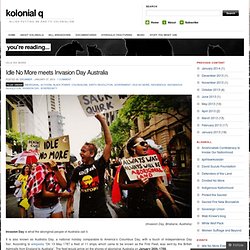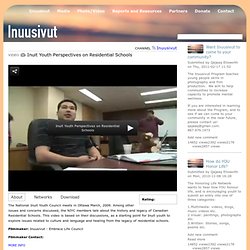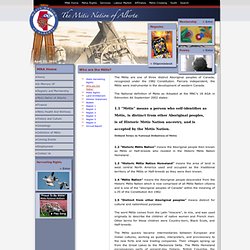

Pauktuutit. The Residential School experience for Aboriginal, including some Inuit, in the Northwest Territories became reality in the late 1860s.

The first government- regulated school for Inuit opened in 1951 in Chesterfield Inlet. After 1950, when Inuit became settlement based, almost all Inuit children were required to attend Residential Schools or federal hostels in order to receive a formal education. Inuit Organizations Applaud Residential Schools Documents Court Decision. February 4, 2013 – Ottawa, Ontario - Inuit organizations across Canada are applauding the Ontario Superior Court of Justice decision that requires the Government of Canada to provide to the Truth and Reconciliation Commission (TRC) all relevant federal documents related to the legacy, past and present, of residential schools in Canada, including documents at Library and Archives Canada.

The Court announced the decision last week. The application to clarify the obligation of Canada with respect to federal documents was filed by the TRC with the support of Inuit organizations and the Assembly of First Nations. “We applaud the court for its decision,” said ITK President Terry Audla. Idle No More meets Invasion Day Australia. (Invasion Day, Brisbane, Australia) Invasion Day is what the aboriginal people of Australia call it.

It is also known as Australia Day, a national holiday comparable to America’s Columbus Day, with a touch of Independence Day flair. According to wikipedia “On 13 May 1787 a fleet of 11 ships, which came to be known as the First Fleet, was sent by the British Admiralty from England to Australia”. The fleet would arrive on the shores of aboriginal Australia on January 26th, 1788.
To the aboriginals history might go a little like This year, on January 26th 2013, Invasion Day was greeted with rallies and signs reading “Idle No More”. In fact, the American invasions set the stage for what would happen on that great land. (header by Peter Muraay Djerpi Mulchay) On October 12th 1492, Columbus- a British, Spanish funded explorer- washes up on the Canary Islands, thinking he is in India. A few years later in 1502 the Portuguese (also) begin to colonize India. (Photo by, Mariah Nevin. Like this: Hundreds of Inuit Left Out of Residential Schools Compensation Plan to File Suit. In the mid-twentieth century, many Inuit children were forcibly taken from their families and placed in residential schools run by, or sponsored by, the Government of Canada.

Inuit Youth Perspectives on Residential Schools. The National Inuit Youth Council meets in Ottawa March, 2009.

Among other issues and concerns discussed, the NIYC members talk about the history and legacy of Canadian Residential Schools. This video is based on their discussions, as a starting point for Inuit youth to explore issues related to culture and language and healing from the legacy of residential schools. Filmmaker: Inuusivut - Embrace Life Council Filmmaker Contact: More info qajaaq@gmail.com Producer's Name: Inuusivut.
Métis. The term Métis refers to a collective of cultures and ethnic identities that resulted from unions between Aboriginal and European people in what is now Canada.

Métis stems from the Latin verb miscēre, “to mix.” The word initially referred to the children of these relationships, but over generations it came to refer to the distinct cultural identities these communities developed. In recent years, partially due to the Métis rights case R. v. Powley, the word Métis has shifted from referring to a single cultural identity produced by European-Aboriginal intermarriage across different communities, to applying to multiple identities that have arisen from diverse historical instances of Aboriginal-European heritage. Métis Seek Recognition 2012. Canada's Metis seek heritage recognition. Aboriginal Peoples in Canada: First Nations People, Métis and Inuit. Highlights Aboriginal people – Diverse groups living across the country New data from the National Household Survey (NHS) show that 1,400,685 people had an Aboriginal identity in 2011, representing 4.3% of the total Canadian population.

- Who are the Métis? The Métis are one of three distinct Aboriginal peoples of Canada, recognized under the 1982 Constitution.

Fiercely independent, the Métis were instrumental in the development of western Canada. The National definition of Metis as Adopted at the MNC’s 18 AGA in Edmonton Ab September 2002 states: 1.1 "Métis" means a person who self-identifies as.